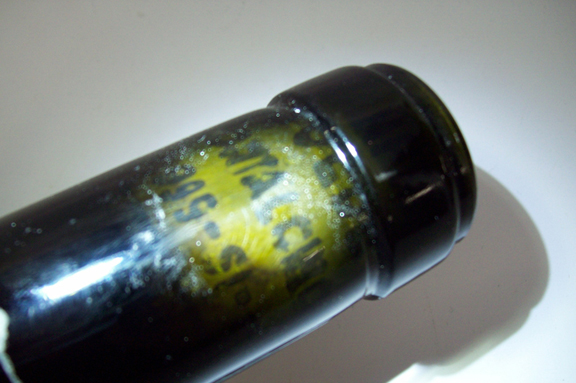
Kurniawan, the Rabbi, and the Ham Sandwich
I really liked Mike Steinberger's post on WineSearcher.com this week, "Rudy, Fraud and Wine Snobs."
Mike is one of our country's leading wine writers and he's also one of the best writers writing about wine today in English.
He's a writer's writer and he's also extremely funny.
So much has been written about the Rudy Kurniawan wine counterfeiting episode.
Last week, Kurniawan became the first person to be sent to prison by the U.S government for wine fraud. He'll spend the next ten years, more or less, behind bars.
The story made huge waves in the U.S. wine world and beyond. Over the last week, I've read scores of blog posts devoted to the affaire Kurniawan by European wine writers. In Europe, where wine adulteration is a major agricultural issue, counterfeiters are generally fined and their wines are confiscated. But to my knowledge, few ever go to prison.

Above: A friend at a major wine auction house once asked me to help out with the authentication of a lot purportedly from one of Italy's most exclusive producers. In the end, she established the wine's authenticity by verifying that the corks were branded and not printed (branded with an iron as opposed to printed with ink). The winery began using printed corks after the vintage in question.
The Kurniawan case is a watershed. With its aggressive prosecution, the U.S. government has sent a crystal clear message to Europeans: wine adulteration will not be tolerated in the U.S.
Of course, the Kurniawan episode is remarkable because of the scope of his adulteration, the millions of dollars at stake, and the colorful characters associated with the case.
But Steinberger is the first writer to point out something fundamentally important about the whole debacle.
"The Kurniawan imbroglio," he writes, "demonstrated that wine critics and other presumed experts are just as impressionable as the rest of us, if not more so. There are limits when it comes to wine expertise, and those limits were brutally exposed by Kurniawan."
"However," he adds, "the most salutary effect of the Kurniawan case is that it has helped create a happier, healthier wine culture by draining some of the mystique out of old wines."
"In the past 15 years or so," he explains (and this is the nugget imho), "old wines have become something else: trophies for rich people eager to flaunt their wealth… The spiraling prices created a class divide among hardcore enophiles, between the haves against the have-mores."
If the Kurniawan episode has humbled a famous wine writer or two, I think that's a good thing. The world of fine wine writers and fine wine connoisseurs is a heady one to inhabit. And frankly, its willful exclusivity can border on the offensive (at least in my experience).
But even more importantly, at least in my view of the wine world, the Kurniawan case — and Steinberger so masterfully illustrates this in his piece — showed that astronomically priced wine isn't everything it's cracked up to be.
I've never tasted Domaine de la Romanée-Conti, for example, and I probably never will. I can't afford it and I don't have any friends who can afford it. WineSearcher.com shows the average price for the current release (2005) of DRC Échezaux at nearly $1,200.
It's kind of like the joke about the Rabbi and the Ham Sandwich. The Rabbi takes a bite and is asked what he thinks.
"Ham tastes good," he says. "But I don't need to eat it. Sex, on the another hand…"
Please read Steinberger's excellent post. I highly recommend it.
Jeremy Parzen
follow Jeremy @DoBianchi